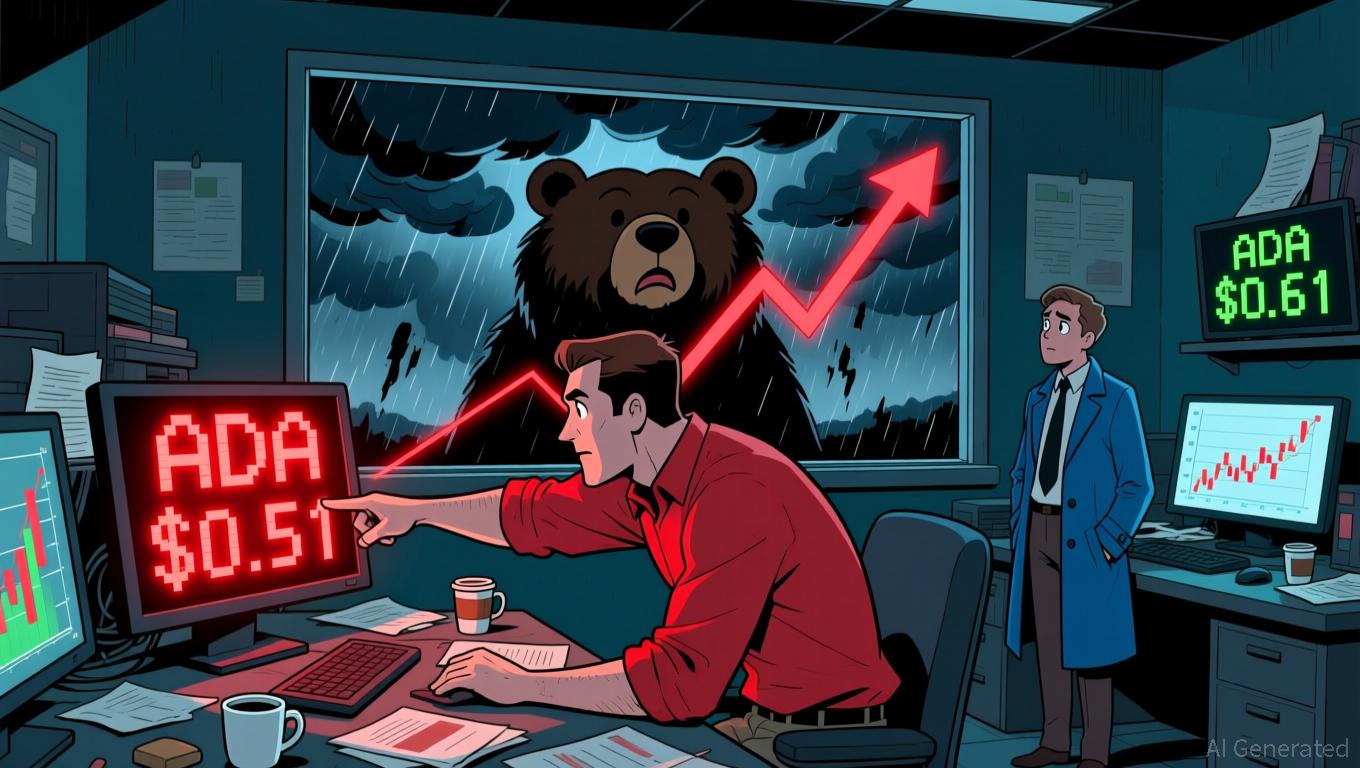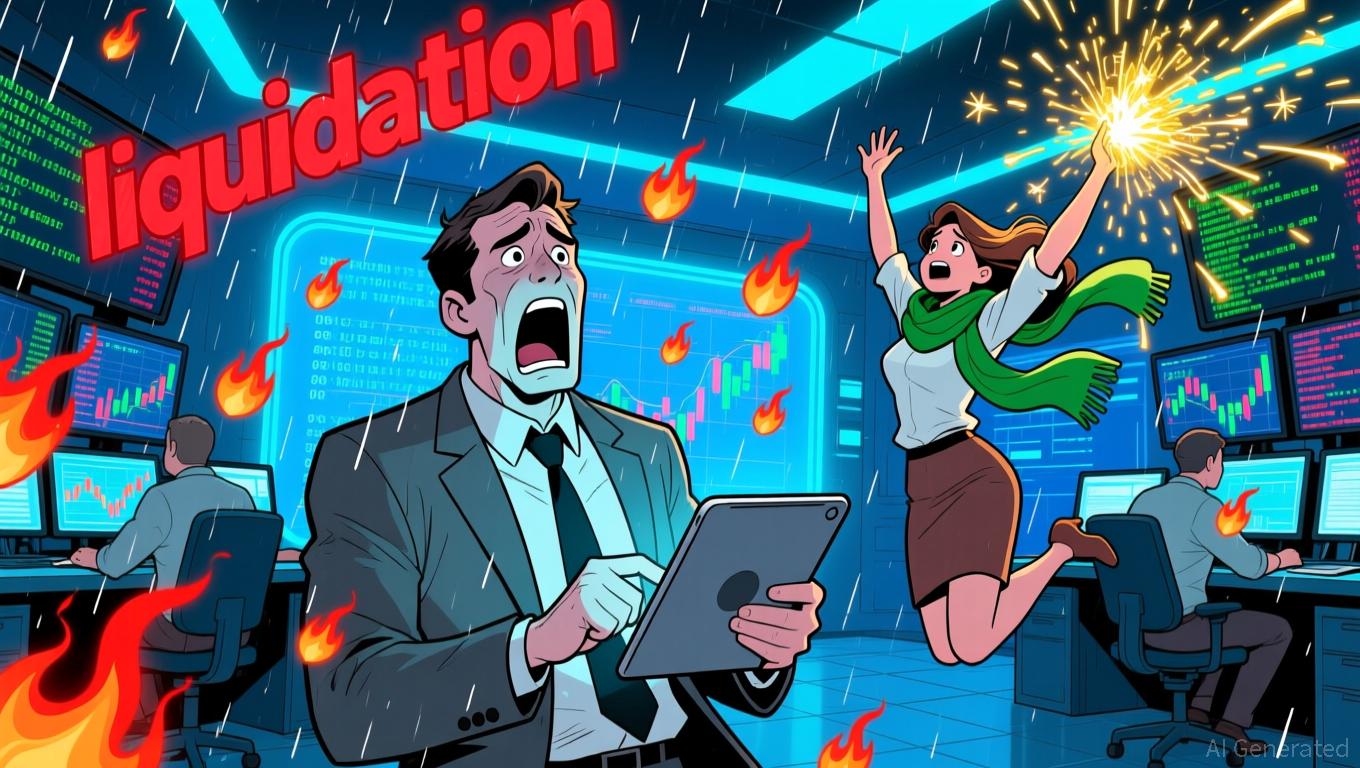AAVE Drops 11.27% Over the Past Week as Regulatory Reach Grows and Onchain Whales Make Moves
- Aave Labs secures Ireland's CASP license to expand stablecoin services, bridging DeFi and traditional finance. - Strategic acquisitions and institutional platforms like Horizon signal Aave's shift toward regulated, user-friendly ecosystems. - Aave V3 sees $61M ETH deposit amid 17.54% AAVE price drop, highlighting market confidence despite volatility. - ApeX integrates Chainlink for RWA derivatives, while AAVE's post-drawdown rebounds show no significant statistical edge.
Aave Labs has advanced its push into regulated financial sectors by obtaining a Crypto-Asset Service Provider (CASP) license from Ireland’s Central Bank. With this approval, the company can now facilitate stablecoin conversions, including those involving its proprietary stablecoin GHO. This development is a notable milestone in making the protocol more accessible to mainstream financial users and ensuring compliance with European regulations.
Adding fiat capabilities is a key element of Aave Labs’ broader rebranding effort, as the company expands its suite of products beyond its original DeFi focus. In August 2025, Aave introduced Horizon, a regulated lending platform for institutions that supports tokenized real-world assets (RWAs) as collateral. More recently, the acquisition of Stable Finance—a stablecoin savings platform aimed at consumers—has further reinforced Aave’s transition toward a regulated and user-centric environment. These initiatives reflect a clear move away from the unregulated DeFi landscape toward a hybrid approach that merges innovation with regulatory oversight.
On the blockchain front, Aave continues to see robust onchain engagement. On November 14, 2025, a major investor deposited 19,508 ETH (worth $61.03 million) into Aave V3, following a previous short of 66,000 ETH. This action indicates trust in Aave’s security and liquidity, even as the market faces downward pressure. Notably, AAVE’s token value has fallen by 11.27% over the past week and 17.54% in the last month, based on current onchain data.
Elsewhere in DeFi, ApeX is strengthening its infrastructure by incorporating
Backtest Hypothesis
The recent swings in AAVE’s price prompt questions about the likelihood of short-term recoveries after steep drops. Reviewing AAVE’s price action following single-day declines of 10% or more since 2022 shows little evidence of reliable patterns. Although there is a modest 30-day rebound of about +4.8%, this is only slightly above the benchmark return of +3.9%. Short-term win rates hover between 50% and 53%, suggesting that returns after sharp declines are mostly unpredictable and do not offer a significant statistical advantage.
Disclaimer: The content of this article solely reflects the author's opinion and does not represent the platform in any capacity. This article is not intended to serve as a reference for making investment decisions.
You may also like
Cardano News Update: Institutions Embrace Cardano While DeFi Advances—Cardano and Mutuum Finance Set the Stage for 2025 Crypto Evolution
- Cardano (ADA) and Mutuum Finance (MUTM) lead 2025 crypto divergence through institutional adoption and DeFi innovation. - Cardano partners with EMURGO/Wirex to launch ADA-spending "Cardano Card," targeting 6M users and ISO 20022 alignment for institutional credibility. - Mutuum Finance raises $18.8M in presale, plans Q4 2025 testnet with liquidity pools and mtTokens, offering 250% returns for early buyers. - ADA faces bearish technical patterns and whale selling, while MUTM's low entry price and structur

XRP News Today: Crypto Market Turbulence Rises as SEC Alters Regulations and Major Whale Closes Short Position
- A "Triple Short ASTER" whale liquidated a 4.79M AST short position, triggering crypto market volatility and $10M+ in ETH/XRP losses. - XRP dropped to $2.40 amid Canary Capital's ETF launch, while ETH longs face losses from SEC's accelerated crypto ETF approval process. - SEC's 20-day ETF filing rule and 21Shares' crypto index ETFs (TTOP/TXBC) highlight growing institutional exposure and regulatory uncertainty. - Market analysts link whale activity to broader trends in derivatives trading, ETF adoption, a

China’s economic framework faces challenges from both international trade tensions and internal pressures
- China's economy faces stalling risks as trade tensions, supply chain disruptions, and domestic challenges converge, with record investment declines undermining growth. - Trump's 100% tariffs on Chinese imports and export controls, alongside Beijing's retaliatory measures, create volatility despite temporary trade truce efforts. - Sector-specific risks persist: antimony export bans are suspended, but rare earths and semiconductor disputes remain unresolved, while real estate-linked industries like Lingong

Alibaba and JPMorgan's Tokenization Breakthrough: Driving $3 Billion in Worldwide B2B Trade
- Alibaba partners with JPMorgan to launch tokenized USD/euro payments by December, aiming to cut cross-border transaction delays and costs via blockchain technology. - The initiative uses JPMorgan's JPMD token to enable real-time global settlements, bypassing intermediaries that typically slow down 72-hour international transfers. - Complementing this, Alibaba introduces AI tools like AI Mode ($20/month) for supplier comparisons and agentic pay for automated contract drafting, diversifying revenue streams
